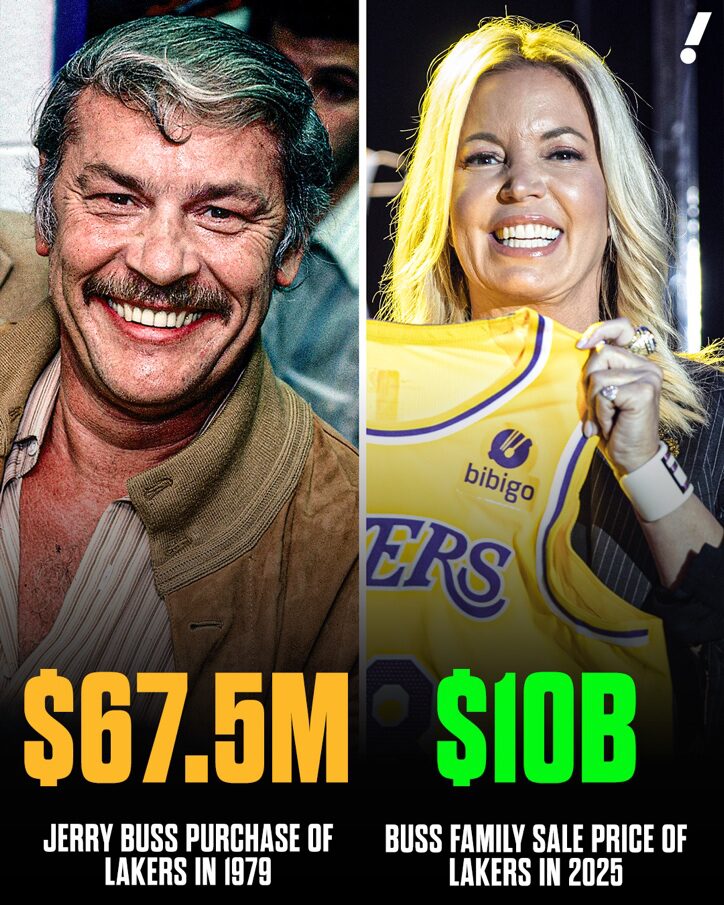When real estate investor Jerry Buss bought the Los Angeles Lakers in 1979, it wasn’t just about sports. He may not have known it then, but he was betting on entertainment, culture, and really — TIME. Over the next four decades, the Buss family transformed the Lakers into a global brand. Now, in 2025, the family’s recent sale of a majority stake marks the end of a dynasty but also an interesting investing lesson.
The headlines celebrated an extraordinary financial win. But when you break down the numbers, the return — while incredible — isn’t quite as unique as it seems. The Buss family bought the Lakers in 1979 for $67.5 million. Selling for $10 billion 46 years later works out to be an 11.5% annual return.
But here’s the twist: if you had simply put that same $67.5 million into the S&P 500 in 1979, you’d have about $12.9 billion today — a 12% annual return. This wasn’t a flashy and exciting return, though. The stock market quietly outperformed the Lakers, but with no courtside seats, no championship rings, no “Showtime documentary”. Just boring, consistent compounding.
The Real Story
What makes this story so great is not that it diminishes the Buss family’s achievement — it underscores how commonplace competitive returns can be when paired with time, patience, and discipline.
Most investors crave excitement — the big story. We look for the next Lakers franchise — a private business, a tech startup, a trendy fund. But the math doesn’t lie; long-term equity ownership in broad markets quietly compounds wealth at a similar pace, while reducing the risks associated with owning a single company.
The Buss family lived through player strikes, coaching scandals, and the uncertain economics of sports broadcasting. The S&P investor just sat there, through recessions, inflation, bubbles, and busts — doing nothing more heroic than staying invested.
This is the humbling truth of investor behavior: the hardest part of investing isn’t finding the next big thing. It’s sticking with the simple thing long enough.
Since 1979, the market has tested investors countless times — Black Monday, the dot-com crash, the Great Recession, COVID, tariffs, political unrest. Each moment tempted people to sell, to “wait it out”, or to chase something new. But those who stayed the course experienced the same quiet magic of compounding that turned $67.5 million into nearly $13 billion.
The Buss story reminds us that wealth creation is often less about brilliance and more about behavior — hanging on when others can’t. Owning a piece of human progress through a diversified portfolio is not glamorous. There’s no confetti, no awards, no trophies. Yet over decades, it can rival, and even outperform, the most glamorous assets on earth.
The next time someone marvels at a fortune built over 40 years, remember the power of a long-term portfolio. Because in the end… anybody could have done this.
Let this be your confirmation that sticking with your long-term plan — the one that was developed with your goals and needs in mind — is all that you need to do! Give us a call anytime to talk about your plan.
Sources (public)
- S&P 500 total returns (incl. dividends): Aswath Damodaran, NYU Stern — Historical Returns on Stocks, Bonds and Bills: 1928–2024. Use his annual S&P 500 total return series for 1979–2024, then compute the geometric CAGR. https://pages.stern.nyu.edu/~adamodar/New_Home_Page/datafile/histretSP.html
- Lakers transaction endpoints: The starting point is Jerry Buss’s 1979 purchase price (reported as $67.5M for the Lakers/Forum/Kings package) and the 2025 majority-stake deal valuing the franchise at ~$10B. CAGR



